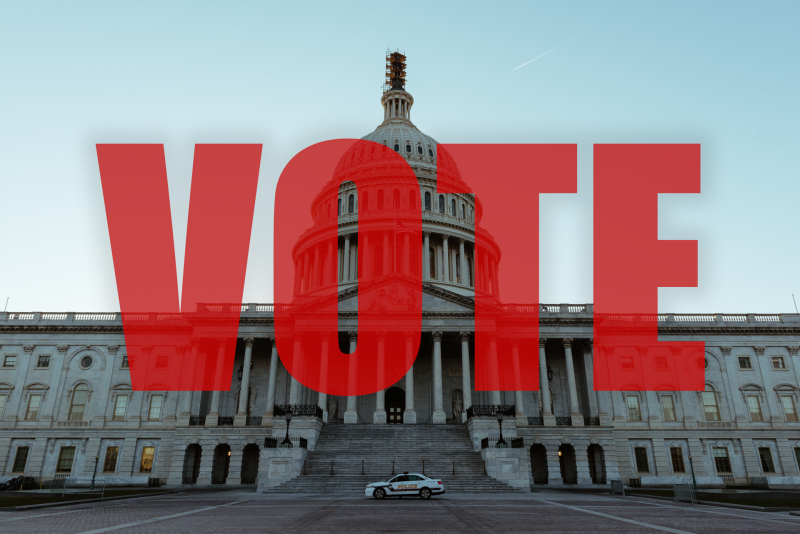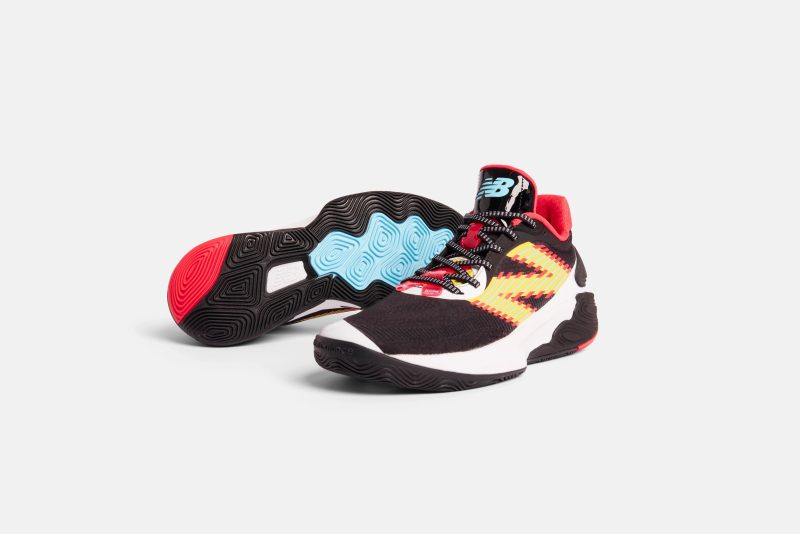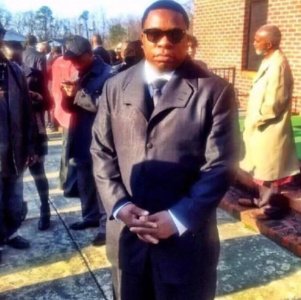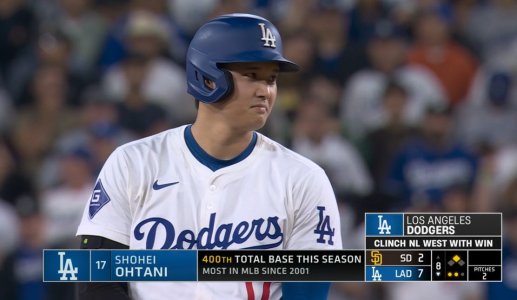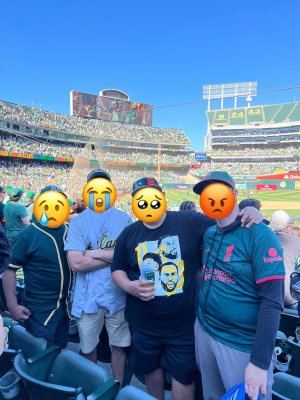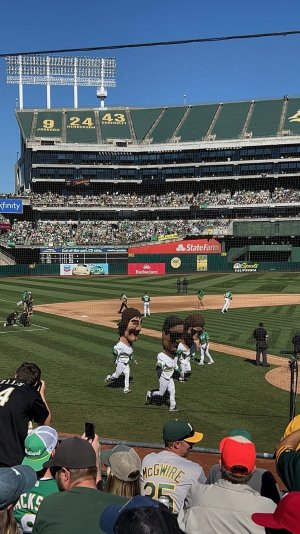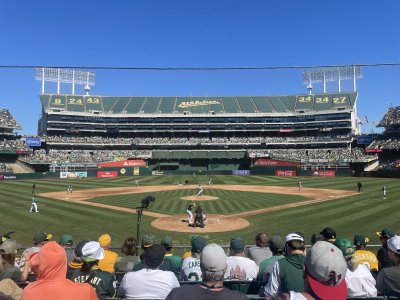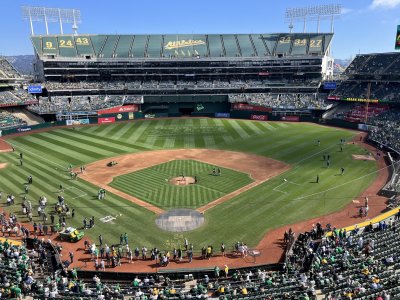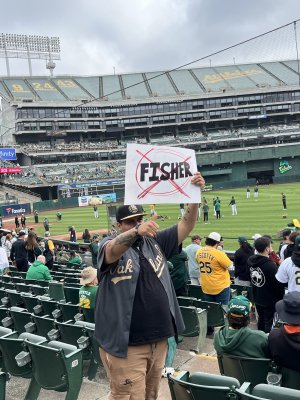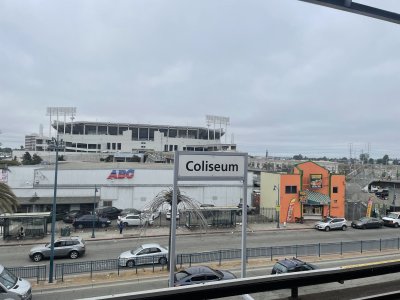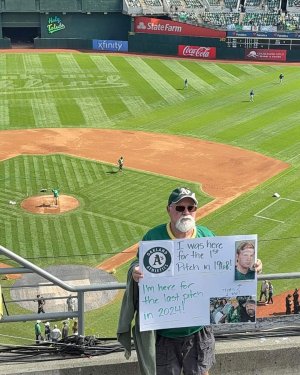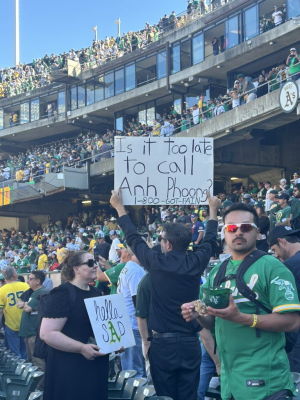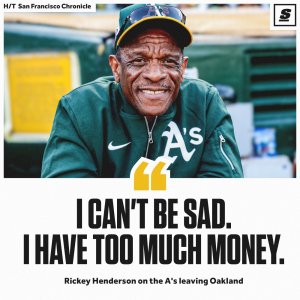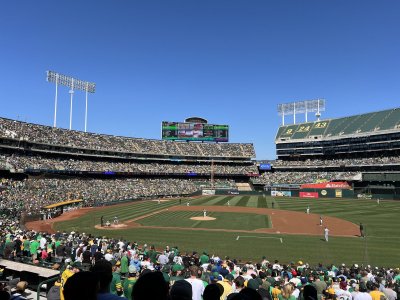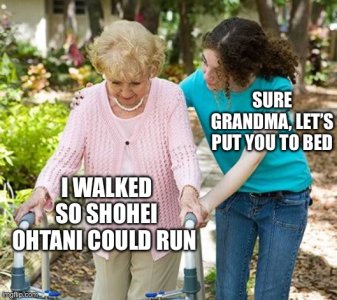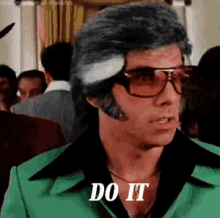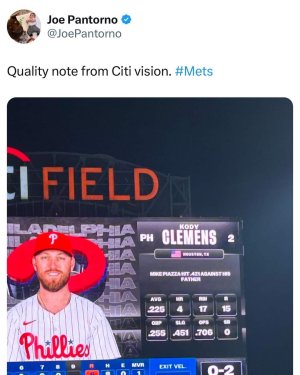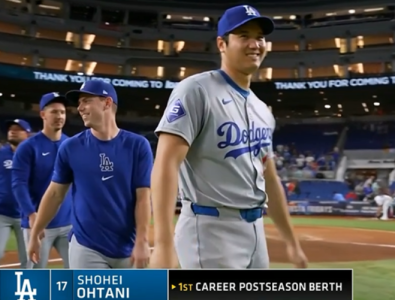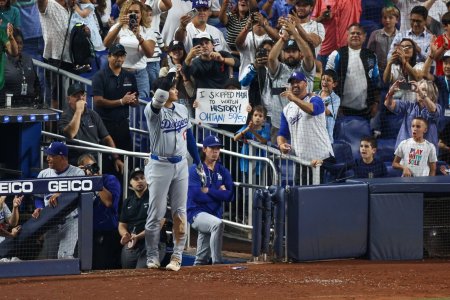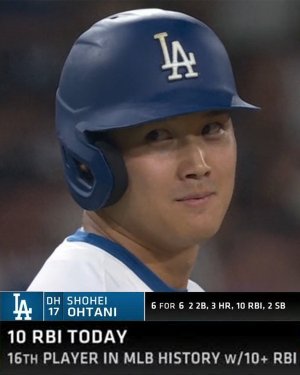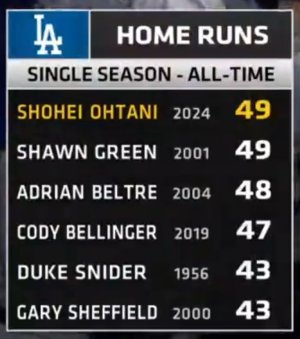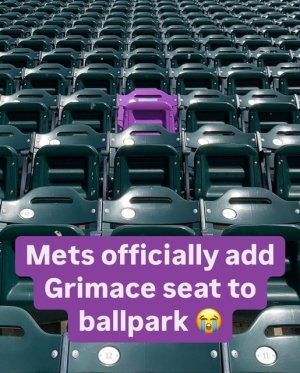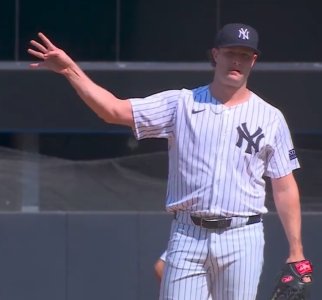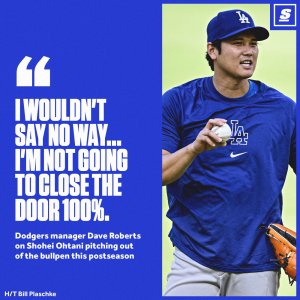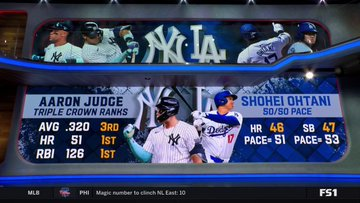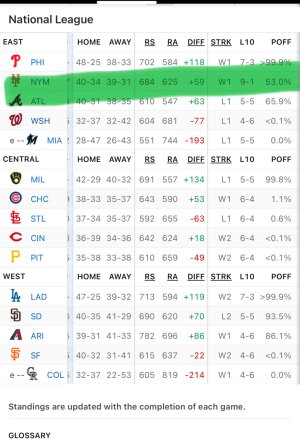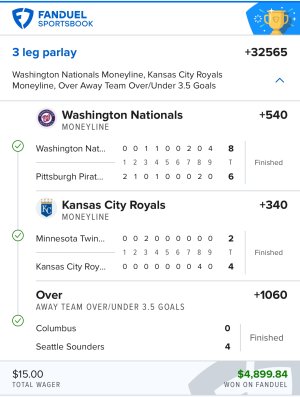Navigation
Install the app
How to install the app on iOS
Follow along with the video below to see how to install our site as a web app on your home screen.

Note: this_feature_currently_requires_accessing_site_using_safari
More options
You are using an out of date browser. It may not display this or other websites correctly.
You should upgrade or use an alternative browser.
You should upgrade or use an alternative browser.
2023 MLB Thread; Say Hey, everybody: Rest In Power, Willie
- Thread in 'Sports & Training' Thread starter Started by CP1708,
- Start date
- 28,059
- 9,181
- Joined
- Nov 18, 2007
The Nats know how that feels. Not even including Rendon in this either.

While the talent is more than comparable, the situations are not. Unfortunately, the Nationals are not even close to being on the level of the Red Sox in terms of big market/global brand. I feel for the Nationals for losing their talent. I have zero sympathy for the Red Sox and believe that the Red Sox should be embarrassed for operating the way they have been.
- 28,825
- 17,433
- Joined
- Mar 22, 2003
While the talent is more than comparable, the situations are not. Unfortunately, the Nationals are not even close to being on the level of the Red Sox in terms of big market/global brand. I feel for the Nationals for losing their talent. I have zero sympathy for the Red Sox and believe that the Red Sox should be embarrassed for operating the way they have been.
To be fair - the Lerners are worth north of 6B - they could have spent to SOME degree
- 28,059
- 9,181
- Joined
- Nov 18, 2007
To be fair - the Lerners are worth north of 6B - they could have spent to SOME degree
For sure. Unfortunately for them, they chose to invest in Stephen Strasburg and not their other big talent.
- 28,825
- 17,433
- Joined
- Mar 22, 2003
For sure. Unfortunately for them, they chose to invest in Stephen Strasburg and not their other big talent.
The Corbin deal has killed them too
- 18,752
- 10,150
- Joined
- Jan 3, 2011
Sean Manaea ranked #17 in this years free agency class is way to high 

- 18,752
- 10,150
- Joined
- Jan 3, 2011
- 18,752
- 10,150
- Joined
- Jan 3, 2011
- 594
- 644
- Joined
- Dec 4, 2022
Every year I’m astonished at how deep baseball pockets are.
- 7,470
- 10,514
- Joined
- Oct 14, 2015
It is weird seeing Jacob in a Texas uniform. I remember when he got called up and they were going to use him as a reliever. When the Noah hype was in full gear, I always told everyone Jacob was the true ace. He was flying a little under the radar when Noah was that dude. And Jacob lived up to it for a long time. I think he and the Mets both won. Mets stuck to their guns about not doing a long term deal for a player who’s been injured a lot the past couple of years. And Jacob got his ideal contract with a lot of years and a better situation for his family. I wish him luck unless he’s playing against the Mets.
- 49,503
- 50,784
- Joined
- Jun 21, 2009
Rodon to the Yankees looking possible.
- 22,887
- 25,462
- Joined
- Feb 23, 2010
It's important to start with this context before diving into the industrywide reviews of the Boston Red Sox signing Masataka Yoshida, a free agent outfielder from Japan who received a five-year, $90 million contract from the Red Sox:
Baseball is hard.
The act of playing baseball is notoriously difficult, as is predicting the future of it. Projecting players in Triple-A simply going up one level to the big leagues is much harder than you might think. Projecting players who have starred in a professional league across the globe? Well, that is even harder.
Yoshida didn't appear in my free agency rankings going into the winter as most execs I spoke with didn't think any foreign players other than Kodai Senga were likely to hit the market and be good enough to make the top 50. It became clear in the following weeks that Yoshida would be posted, and expectations were that he would get a multiyear deal with the winning bid at a low-eight-figure AAV, call it $35-50 million total as a contract, plus a posting fee.
That figure comes from teams projecting what the highest bid would be in an admittedly frothy free agent market. What that means is each team is marking up from what they actually think he's worth or would offer, imagining what the hypothetical team that likes him the most would do.
So you can then imagine the surprise across the industry when news broke that Yoshida signed with the Red Sox for five years, $90 million, plus a $15.4 million posting fee to his NPB club.
I sent texts around to a number of scouts and execs explaining what I thought his tools were (high contact, very good approach, average-ish power, limited defensive ability) and asking what I was missing between that scouting report and what the Red Sox paid.
"Nothing," replied one international scouting director. "Overpay for me ... too rich imo," from another scouting director. A third exec: "I have no idea." A fourth: "Nothing ... I wish they and him luck." A fifth: "We thought he was worth less than half of what they paid." A sixth added, "I have no words."
In total, I spoke to ten sources in the aftermath of the signing and they all had a similar breakdown. They all had some level of appreciation for the player, but thought the Red Sox overpaid by a hefty margin.
There's more to be learned from this than just dunking on the team because they're perceived to have lost the virtual news conference before the physical is even over. Since the physical hadn't been completed at press time, a Red Sox source wouldn't comment when reached via text.
First, let's look at the player.
Yoshida can hit -- nobody disputes this -- and it's his best quality.
Last season in Japan (generally regarded as better than Triple-A, but below the big leagues in competition level), he had 80 walks to 40 strikeouts to go with 21 homers. Everyone I spoke with likes his swing and thinks he has average raw power, which if tapped into would translate to the 18-20 homer area that he has already demonstrated. A rival exec with a rosier projection put it this way: "Our evals think he can really hit ... a little rich but not totally out of bounds if you're REALLY buying into the bat."
Already, we're talking about a high-floor player that, even if he performs a little below these expectations, would probably fare well in a straight dollars-to-WAR conversion. Would he produce 1.5 to 2 WAR per year (the WAR of an average everyday player)? Seems like he certainly could. That would come close to "covering" his contract, by basic math many front offices use.
There's chatter from informed sources that Boston is convinced that Yoshida's bat is potentially special, and a couple sources thought there was interest in the general area of what Boston paid from at least one other club, though I couldn't find that team(s). Yoshida, listed at 5-foot-8, also makes sense in the context of how the Sox have targeted shorter-limbed, hit-first types in the draft and trades: Nick Yorke, Mikey Romero, Jeter Downs, Alex Verdugo, etc. The five teams with the lowest strikeout rates last season all made the playoffs.
Things start to trend in the direction of the less-than-glowing quotes when you look at the rest of the picture. He played 40 games in the outfield last year and was designated hitter for the other 79. Scouts think he'll be fine, probably a bit below average defensively in left field, but Yoshida turns 30 in July, so that's something to watch in the back half of the contract.
That last exec who loved the bat added, "Not the rosiest defensive outlook. Maybe it hurts them less with 81 games [in left field] at Fenway." As a left-handed hitter with medium power, an expansive right field in Fenway doesn't necessarily lend itself to power production.
Most sources thought that last year's top free agent who came from the same league in Japan -- Chicago Cubs OF Seiya Suzuki -- was a superior free agent option to Yoshida at the same juncture. Suzuki signed as a 27-year-old for five years, $85 million plus a nearly $15 million posting fee. He posted 2.0 WAR in 111 games last season, according to FanGraphs. This demonstrates just how difficult it is to translate production levels from NPB to MLB as both the skill level and style of play are different. The variance in what all 30 MLB clubs think a seasoned NPB hitter would become in the big leagues is more in line with teenaged international prospects than it is with MLB veterans.
For all the question marks, it seems unlikely that the Red Sox will lose completely in this deal. At the very least, Yoshida seems likely to be a good platoon player, and if that's all he is, that would still cover at least half of the contract in value produced. And the variance in projections also has an upside: He could also be better than the majority of the industry is expecting.
But given the other options available this winter, could that money have been spent more efficiently? Brandon Nimmo can play center field, is also 29, and is coming off of a 5.4 WAR season for the New York Mets, figuring to cost somewhere in the $125-150 million area (although, in this market, maybe that number rises).
Or if we take even another step back and review the last few years of bigger-picture team-building moves by the Red Sox: What is the common thread or the cohesive plan, regardless of outcome? Mookie Betts (10.4 WAR the last two seasons) was too expensive and the trade return has been underwhelming thus far, but Trevor Story (two straight two-win seasons, now age 30) was worth $140 million. Rafael Devers hasn't been extended (but still could be) and Xander Bogaerts is now headed to the San Diego Padres on a whopping $280 million deal that blew away Boston's best offer.
The Red Sox have been reported to be just missing on some notable free agents of late while sticking to their assigned values. That's peculiar given how they went well above industry expectations with this deal, but then again, every player is unique. It's certainly possible they're right on all counts this winter; we all know passing judgment on an offseason this early is useless.
The 2022 club was pretty average, and while Yoshida and three solid bullpen players have been added in free agency, how much money is left to be spent? What's the plan for spending it? Does Boston expect to catch the New York Yankees, Tampa Bay Rays and Toronto Blue Jays in baseball's deepest division, the American League East? There's still some work to be done.
Baseball is hard.
The act of playing baseball is notoriously difficult, as is predicting the future of it. Projecting players in Triple-A simply going up one level to the big leagues is much harder than you might think. Projecting players who have starred in a professional league across the globe? Well, that is even harder.
Yoshida didn't appear in my free agency rankings going into the winter as most execs I spoke with didn't think any foreign players other than Kodai Senga were likely to hit the market and be good enough to make the top 50. It became clear in the following weeks that Yoshida would be posted, and expectations were that he would get a multiyear deal with the winning bid at a low-eight-figure AAV, call it $35-50 million total as a contract, plus a posting fee.
That figure comes from teams projecting what the highest bid would be in an admittedly frothy free agent market. What that means is each team is marking up from what they actually think he's worth or would offer, imagining what the hypothetical team that likes him the most would do.
So you can then imagine the surprise across the industry when news broke that Yoshida signed with the Red Sox for five years, $90 million, plus a $15.4 million posting fee to his NPB club.
I sent texts around to a number of scouts and execs explaining what I thought his tools were (high contact, very good approach, average-ish power, limited defensive ability) and asking what I was missing between that scouting report and what the Red Sox paid.
"Nothing," replied one international scouting director. "Overpay for me ... too rich imo," from another scouting director. A third exec: "I have no idea." A fourth: "Nothing ... I wish they and him luck." A fifth: "We thought he was worth less than half of what they paid." A sixth added, "I have no words."
In total, I spoke to ten sources in the aftermath of the signing and they all had a similar breakdown. They all had some level of appreciation for the player, but thought the Red Sox overpaid by a hefty margin.
There's more to be learned from this than just dunking on the team because they're perceived to have lost the virtual news conference before the physical is even over. Since the physical hadn't been completed at press time, a Red Sox source wouldn't comment when reached via text.
First, let's look at the player.
Yoshida can hit -- nobody disputes this -- and it's his best quality.
Last season in Japan (generally regarded as better than Triple-A, but below the big leagues in competition level), he had 80 walks to 40 strikeouts to go with 21 homers. Everyone I spoke with likes his swing and thinks he has average raw power, which if tapped into would translate to the 18-20 homer area that he has already demonstrated. A rival exec with a rosier projection put it this way: "Our evals think he can really hit ... a little rich but not totally out of bounds if you're REALLY buying into the bat."
Already, we're talking about a high-floor player that, even if he performs a little below these expectations, would probably fare well in a straight dollars-to-WAR conversion. Would he produce 1.5 to 2 WAR per year (the WAR of an average everyday player)? Seems like he certainly could. That would come close to "covering" his contract, by basic math many front offices use.
There's chatter from informed sources that Boston is convinced that Yoshida's bat is potentially special, and a couple sources thought there was interest in the general area of what Boston paid from at least one other club, though I couldn't find that team(s). Yoshida, listed at 5-foot-8, also makes sense in the context of how the Sox have targeted shorter-limbed, hit-first types in the draft and trades: Nick Yorke, Mikey Romero, Jeter Downs, Alex Verdugo, etc. The five teams with the lowest strikeout rates last season all made the playoffs.
Things start to trend in the direction of the less-than-glowing quotes when you look at the rest of the picture. He played 40 games in the outfield last year and was designated hitter for the other 79. Scouts think he'll be fine, probably a bit below average defensively in left field, but Yoshida turns 30 in July, so that's something to watch in the back half of the contract.
That last exec who loved the bat added, "Not the rosiest defensive outlook. Maybe it hurts them less with 81 games [in left field] at Fenway." As a left-handed hitter with medium power, an expansive right field in Fenway doesn't necessarily lend itself to power production.
Most sources thought that last year's top free agent who came from the same league in Japan -- Chicago Cubs OF Seiya Suzuki -- was a superior free agent option to Yoshida at the same juncture. Suzuki signed as a 27-year-old for five years, $85 million plus a nearly $15 million posting fee. He posted 2.0 WAR in 111 games last season, according to FanGraphs. This demonstrates just how difficult it is to translate production levels from NPB to MLB as both the skill level and style of play are different. The variance in what all 30 MLB clubs think a seasoned NPB hitter would become in the big leagues is more in line with teenaged international prospects than it is with MLB veterans.
For all the question marks, it seems unlikely that the Red Sox will lose completely in this deal. At the very least, Yoshida seems likely to be a good platoon player, and if that's all he is, that would still cover at least half of the contract in value produced. And the variance in projections also has an upside: He could also be better than the majority of the industry is expecting.
But given the other options available this winter, could that money have been spent more efficiently? Brandon Nimmo can play center field, is also 29, and is coming off of a 5.4 WAR season for the New York Mets, figuring to cost somewhere in the $125-150 million area (although, in this market, maybe that number rises).
Or if we take even another step back and review the last few years of bigger-picture team-building moves by the Red Sox: What is the common thread or the cohesive plan, regardless of outcome? Mookie Betts (10.4 WAR the last two seasons) was too expensive and the trade return has been underwhelming thus far, but Trevor Story (two straight two-win seasons, now age 30) was worth $140 million. Rafael Devers hasn't been extended (but still could be) and Xander Bogaerts is now headed to the San Diego Padres on a whopping $280 million deal that blew away Boston's best offer.
The Red Sox have been reported to be just missing on some notable free agents of late while sticking to their assigned values. That's peculiar given how they went well above industry expectations with this deal, but then again, every player is unique. It's certainly possible they're right on all counts this winter; we all know passing judgment on an offseason this early is useless.
The 2022 club was pretty average, and while Yoshida and three solid bullpen players have been added in free agency, how much money is left to be spent? What's the plan for spending it? Does Boston expect to catch the New York Yankees, Tampa Bay Rays and Toronto Blue Jays in baseball's deepest division, the American League East? There's still some work to be done.
DeadsetAce
Supporter
- 106,673
- 52,825
- Joined
- May 31, 2004
Does Boston expect to catch the New York Yankees, Tampa Bay Rays and Toronto Blue Jays in baseball's deepest division, the American League East?

Last edited:
- 29,009
- 11,038
- Joined
- Jun 14, 2006
DeadsetAce
Supporter
- 106,673
- 52,825
- Joined
- May 31, 2004
c'mon , wheres ya mahbulls
however u guys spell it

gonna be a long season, man
- 29,009
- 11,038
- Joined
- Jun 14, 2006
i feel for u bro ... sort of 

- 11,853
- 12,558
- Joined
- Oct 25, 2006
All I know is if Yoshida got what he did, in 2 years Munetaka Murakami will likely get whatever Nimmo will end up getting this offseason or more.
All_$tar1997
formerly i-owns2
- 5,728
- 7,266
- Joined
- Jul 22, 2015
- 31,783
- 18,323
- Joined
- May 10, 2009
- 22,199
- 28,653
- Joined
- May 10, 2013
- 20,391
- 14,983
- Joined
- Apr 1, 2008
NIMMOOOOOOOO!!!
- 31,783
- 18,323
- Joined
- May 10, 2009
Mets out on Senga with this or nah?
- 18,752
- 10,150
- Joined
- Jan 3, 2011
I think soMets out on Senga with this or nah?
- 18,752
- 10,150
- Joined
- Jan 3, 2011




